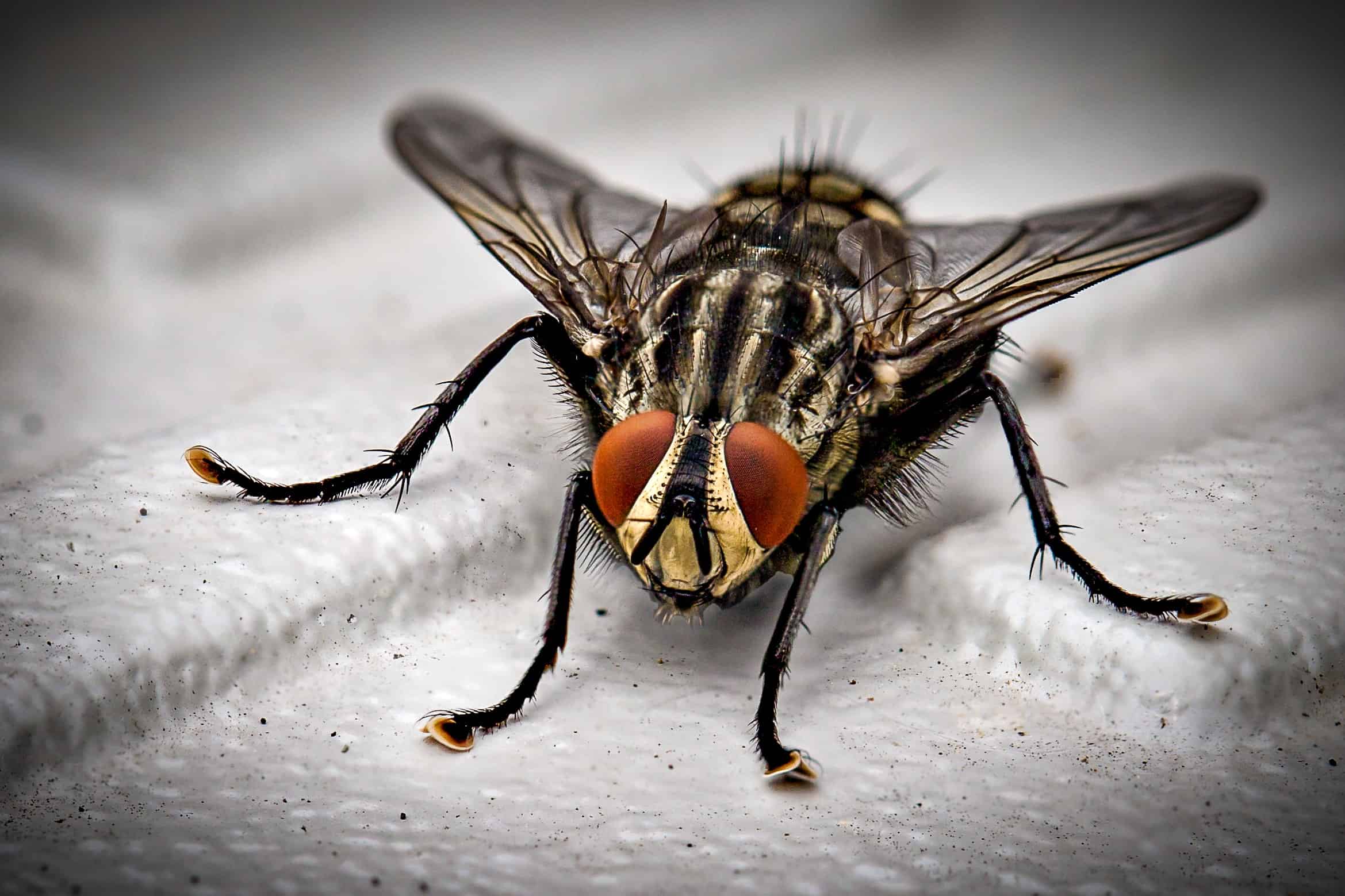Flies are one of the most encountered pests in and around commercial properties, especially in the warmer spring and summer months when pest pressure on the whole rises.
Flies are one of the most encountered pests in and around commercial properties, especially in the warmer spring and summer months when pest pressure on the whole rises.
Aside from being a nuisance – who hasn’t spent part of a lunch or dinner on a restaurant patio taking a swipe or two at flies while trying to eat – flies can spell trouble for restaurants and food processing, healthcare and hospitality facilities.
Flies Are A Public Health Threat
Flies present a significant public health threat to commercial properties because of the harmful bacteria – E. coli and salmonella – they can transmit to food and food preparation, storage and cooking surfaces.
As warmer temperatures push thermometer readings up, the rate of decomposition of the food sources flies like to feast on increases. From fresh produce to garbage, compost and animal feces, the quicker this material spoils, breaks down and starts to smell, the more flies love it.
Having done battle with flies in an array of commercial properties, Rottler Pest Solutions has learned that preventing fly infestations includes employing good sanitation practices, identifying the source of the infestation and breeding locations, and sealing up access points.
Fly infestations are usually the result of exterior doors being left open and missing or damaged screens on windows, doors and air vents. Drive through windows in fast food restaurants are another common entry point.
The Fly Management Checklist
Keep It Clean – Good sanitation practices in and around your facility are critical to keeping flies from gaining a foothold. When you consider a single garbage can that is not emptied can be a breeding ground for thousands of flies, you’ll think twice about waiting to take out the trash.
Rottler recommends using tight-fitting closures for garbage and recycling receptacles, and to empty, clean, and dry them on regular basis. Keep food preparation, storage and serving areas clean of grease spills, crumbs and other food particles. Trash bins and dumpsters should never be placed near the building but at least 50 feet away from potential entry points (i.e., doors, windows, etc.)
Proper Fly Identification – Correctly identifying the fly species infesting your facility is the first step to gaining control and eliminating the problem. A correct identification by the Rottler technical team will allow them to design a treatment plan specific to your property and the fly specie involved. An incorrect identification can lead you on a wild goose chase wasting valuable time and resources.
Fly Management Strategies
Once the fly specie and the source of the infestation has been identified, it is time to put an integrated pest management plan in place.
Strategically placed insect light traps will help measure the effectiveness of your sanitation and other fly prevention efforts, and exterior traps and treatments can knock down infestations and lessen fly pressure around commercial properties.
Check air intake vents for proper screening and use air curtains above loading dock doors to further protect your facility from these unwanted visitors.
Regularly cleaning and bioremediation of floor drains in kitchens and production areas will remove decaying debris that can build up and attract flies, especially filth flies. Bioremediation involves the use of microorganisms to clear drains. The microorganisms consume decaying organic buildup from oils, grease, fats and other waste in drains.
If your business is looking for a pest management partner that goes the extra mile to design and deliver comprehensive integrated pest management programs, call Rottler Pest Solutions at 636-249-1601 for a free QA inspection, consultation or training for your staff.


